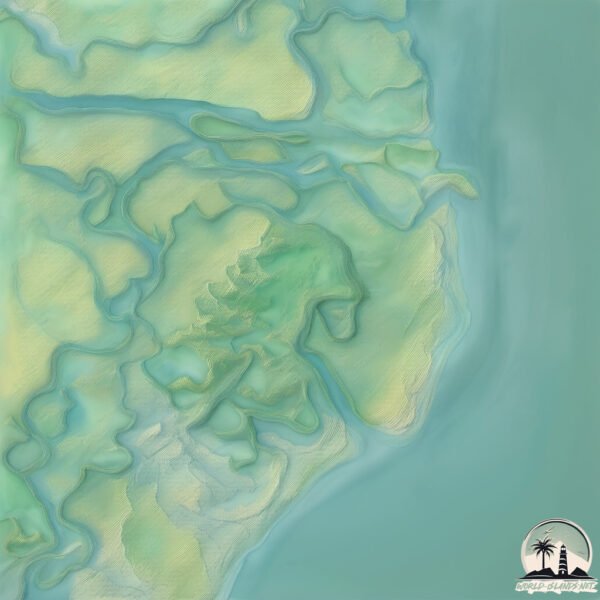Welcome to Little St Simons , a Temperate island in the North Atlantic Ocean, part of the majestic Atlantic Ocean. This guide offers a comprehensive overview of what makes Little St Simons unique – from its geography and climate to its population, infrastructure, and beyond. Dive into the details:
Geography and size of Little St Simons
Size: 44.3 km²Coastline: 51.6 kmOcean: Atlantic OceanSea: North Atlantic OceanContinent: North America
Little St Simons is a Medium Island spanning 44 km² with a coastline of 52 km.
Archipel: –
Tectonic Plate: North America – Covers North America and parts of the Atlantic and Arctic Oceans, characterized by diverse geological features and varying levels of seismic activity.
The geographic heart of the island is pinpointed at these coordinates:
Climate and weather of Little St Simons
Climate Zone: TemperateClimate Details: Humid Subtropical ClimateTemperature: Hot Summer
Climate Characteristics: With continuous rainfall and hot summers, this climate is common in some coastal regions, supporting diverse vegetation.
Topography and nature of Little St Simons
Timezone: UTC-05:00Timezone places: America/New_YorkMax. Elevation: 9 m Mean Elevation: 2 mVegetation: WetlandTree Coverage: 63%
The mean elevation is 2 m. The highest elevation on the island reaches approximately 9 meters above sea level. The island is characterized by Plains: Flat, low-lying lands characterized by a maximum elevation of up to 200 meters. On islands, plains are typically coastal lowlands or central flat areas.
Dominating Vegetation: Wetland
Vegetation: 11 vegetation zones – Exceptionally Diverse Island
Infrastructure and Travelling to Little St Simons
Does the island have a public airport? no .
Does the island have a major port? no .
The mean population of Little St Simons is 1 per km². Little St Simons is Uninhabited. The island belongs to United States of America .
Continuing your journey, Broughton is the next notable island, situated merely km away.
Experience all-inclusive getaway on Georgia coast at Little St. Simons Island
Just off the Georgia coast sits a barrier island unlike any other. It's 11000 acres. That includes a 20-acre lodge compound. The rest ...
Experience all-inclusive getaway on Georgia coast at Little St. Simons Island
Just off the Georgia coast sits a barrier island unlike any other. ...
Just off the Georgia coast sits a barrier island unlike any other. It's 11000 acres. That includes a 20-acre lodge compound. The rest ...
Little St. Simons | Georgia Outdoors
On this episode of Georgia Outdoors; Little St. Simons can only be ...
On this episode of Georgia Outdoors; Little St. Simons can only be reached by boat, but the ride will deliver you to a bird lover's ...
Come Experience Little St. Simons Island (Full Version)
Prized for its pristine natural beauty, gracious hospitality and ...
Prized for its pristine natural beauty, gracious hospitality and secluded worlds-away appeal, Little St. Simons Island is a private ...
United States of America is classified as Developed region: G7: Group of Seven – Major advanced economies, including Canada, France, Germany, Italy, Japan, the United Kingdom, and the United States. The level of income is High income: OECD.
News – Latest Updates and Headlines from Little St Simons
Stay informed with the most recent news and important headlines from Little St Simons. Here’s a roundup of the latest developments.
Loading...
Please note: The data used here has been primarily extracted from satellite readings. Deviations from exact values may occur, particularly regarding the height of elevations and population density. Land area and coastline measurements refer to average values at mean high tide.

